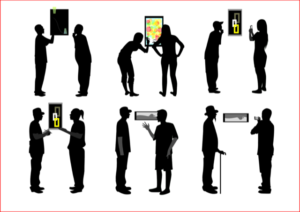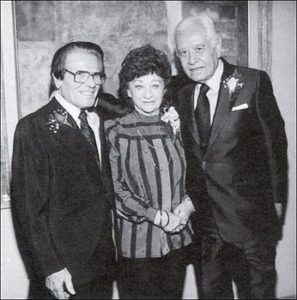
Meeting Mr. Lewin
On a recent podcast, I was asked to name some people that were influential in “shaping my life.” The usual suspects came to mind: my parents, my teachers, and several business mentors.
It stands to reason that people that spent a year or many years trying to guide us as we grew into adulthood would hold these positions in our minds. But there are others we come across – people that pass into and out of our lives more quickly – that can have a profound impact on our career and personal choices.
In my life, one such person was Bernard Lewin.
It was 1985. I was 35. I was speaking at an investment conference in Palm Springs, California. I had recently bumped my net worth past the seven-figure mark. I was hardly rich, but I was feeling flush. So, I decided I was going to indulge a long-held fantasy. I was going to buy some art.
There must have been a half-dozen art galleries in town. I spent a pleasant couple of hours checking them out. Most of them sold what I think of as decorative art – the kind of art that will end up on the walls of your house if you let an interior decorator shop for you. I passed them by without even slowing down. Then I came to a gallery that sold the good stuff. I wasn’t familiar with the pieces in the window, but I stepped in to have a look.
The store was dimly lit and dead quiet. The art – mostly oil paintings and some gouaches – were stunning. I spent a happy several minutes meandering around, trying to make sense of what I was seeing. And then, out of nowhere, an elderly man that looked and dressed like Albert Einstein greeted me. He introduced himself as Bernard Lewin.
I explained that I was in town for business, but I had the afternoon free and was “in the market for a few pieces to start a collection.”
Hand on his chin, Mr. Lewin studied me for a moment. Then he smiled, spread his arms, and said, “Look around. Take your time. Ask if you have questions.”
Then he turned and disappeared into the back of the gallery.
I spent a good hour or so looking and making mental notes of the pieces I liked. I left without seeing him again, and went back to my hotel, thinking, “Okay, that was pleasant.”
As I lay in bed that night, images of some of the paintings I’d seen kept flickering through my mind. So, the next day, after giving an early morning presentation, I went back to Mr. Lewin’s gallery.
Once again, he did not greet me when I entered the gallery. And, once again, he appeared out of nowhere sometime later. I noticed that he was wearing the same patched sweater and corduroy pants he’d been wearing the day before.
“Ah, Mr. Ford!” he said, warmly. He shook my hand. “Good to have you back. Take your time. Ask if you have questions.”
I spent another hour there, by myself, and left without seeing him. And again that night, images of the paintings I’d seen danced in my head.
Despite Mr. Lewin’s apparent indifference towards me as a potential buyer, I visited his gallery the next day, determined to buy something from him. To keep him from slipping away this time, I held his hand as he greeted me and told him that I wanted to buy several pieces. “What would you recommend for a budget of, say, $35,000?” I said.
I thought that would impress him. I thought I’d be able to buy a dozen pieces with that kind of money. What I quickly found out was that I had accidentally walked into a gallery that featured some of the most important Mexican modern artists: Diego Rivera, José Clemente Orozco, Rufino Tamayo, Francisco Zúñiga, and Frida Kahlo, to name just five of them.
And this old man in a tattered sweater that I was talking to was the most important US dealer of Mexican modern masters.
Mr. Lewin spent a good, long time with me that day, giving me essential facts about the art I was looking at and regaling me with stories of his life as an art dealer. He also interviewed me extensively about my taste in art and my plans for building a collection.
Finally, he helped me select three pieces: a large mixograph by Rufino Tamayo, a drawing by Diego Rivera, and a beautiful little oil painting by José Clemente Orozco.
The three cost me considerably more than I had planned to spend. But in retrospect, they were a very good investment. The Orozco alone is worth more than 10 times what I paid for it.
Over those several days, I spent a total of no more than four hours with Mr. Lewin. But in that time, he set me on a path that would immeasurably enrich my life.




